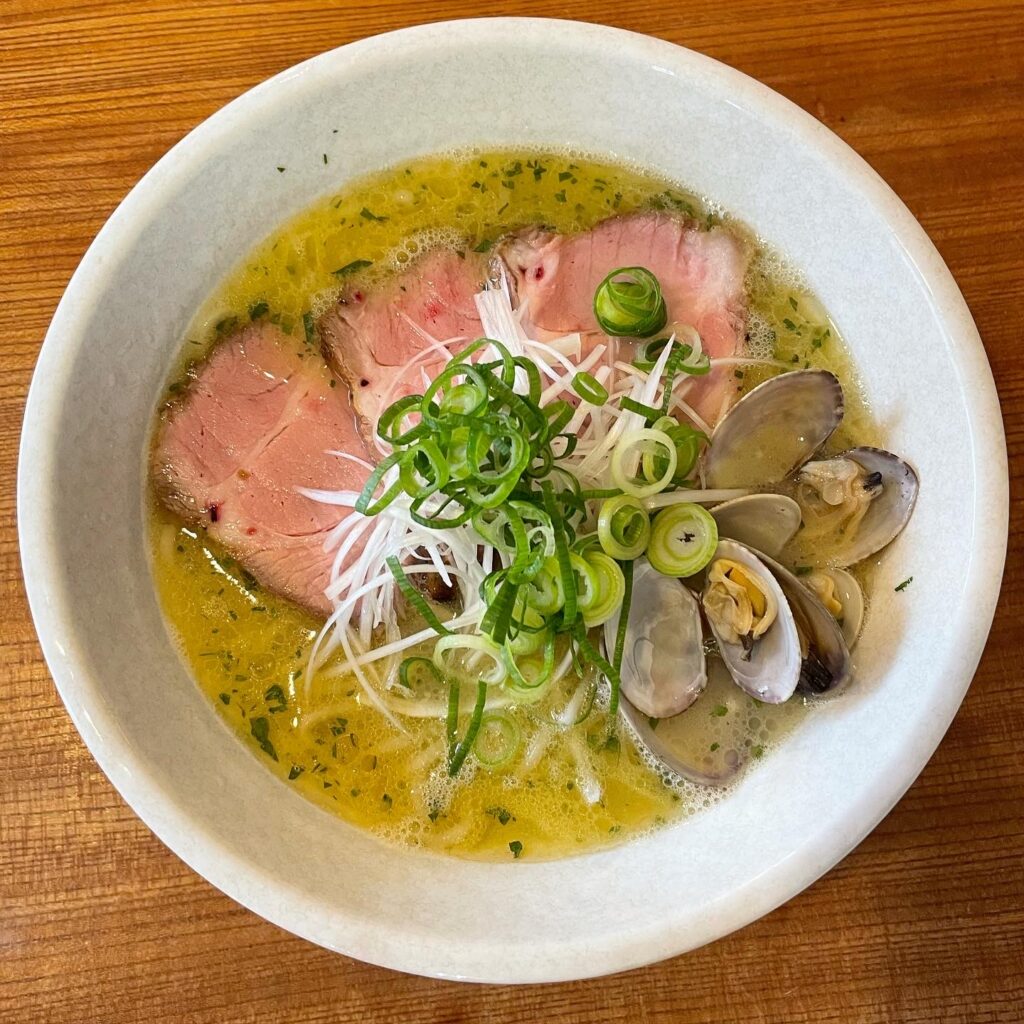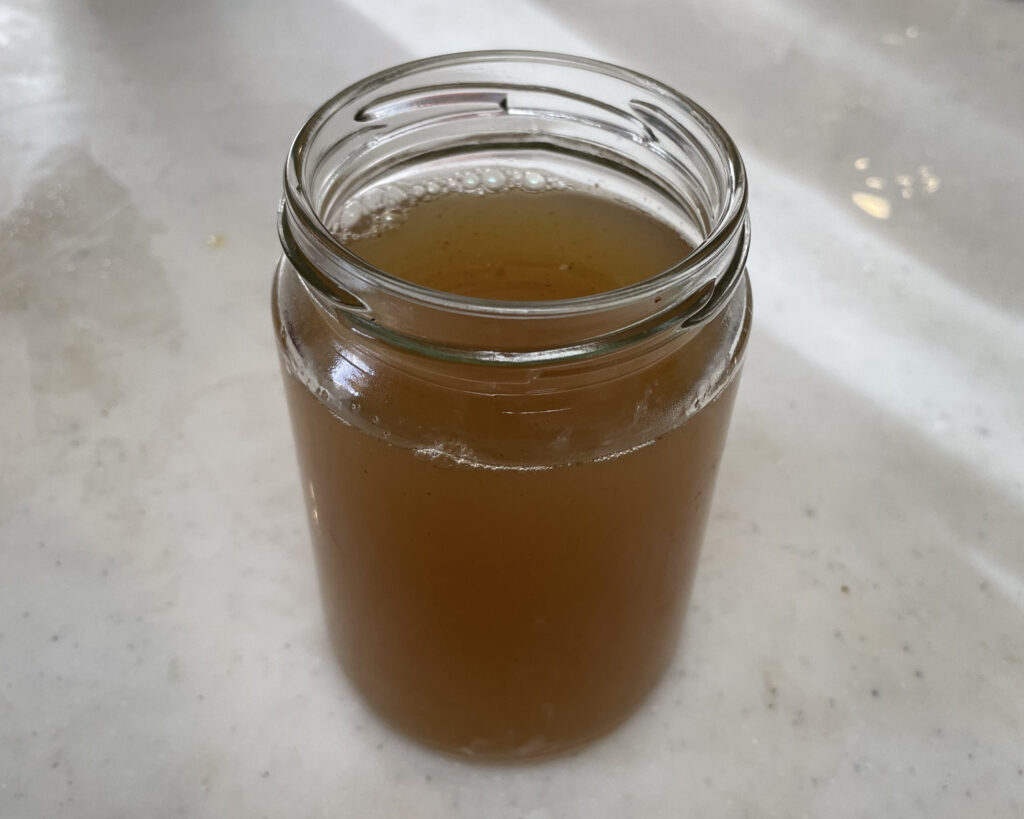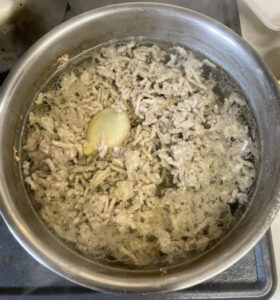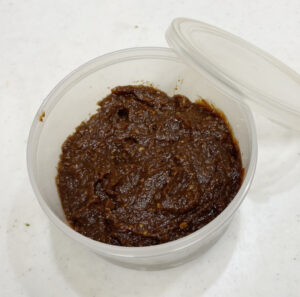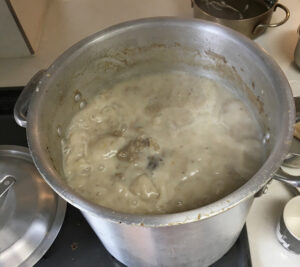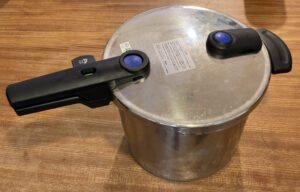Hi! I’m Komugi!

I enjoy making Ramen at home!
One of the most popular articles in my blog in Japanese is “How to make basic Shio Tare”. My Shio Tare has a mild flavor, so that it goes well with any base soup. The taste is really great, but it has a weak point that some of the ingredients such as dried scallop adductor and saury flakes are not available in our neighborhood.
※It is said that sary flake is getting more difficult to buy because of a poor catch of sary. (as of December in 2022)
Therefore, I’ll tell you how to make basic Shio Tare with ingredients available in the super market this time. Let’s get started.
Ingredients(9〜10 Portions of Ramen)
Ingredients of Broth
・frozen little neck clams with shells 150g※1
・mixed flakes(thick) 30g ※2
・sea cabbage 10g
・water 400cc
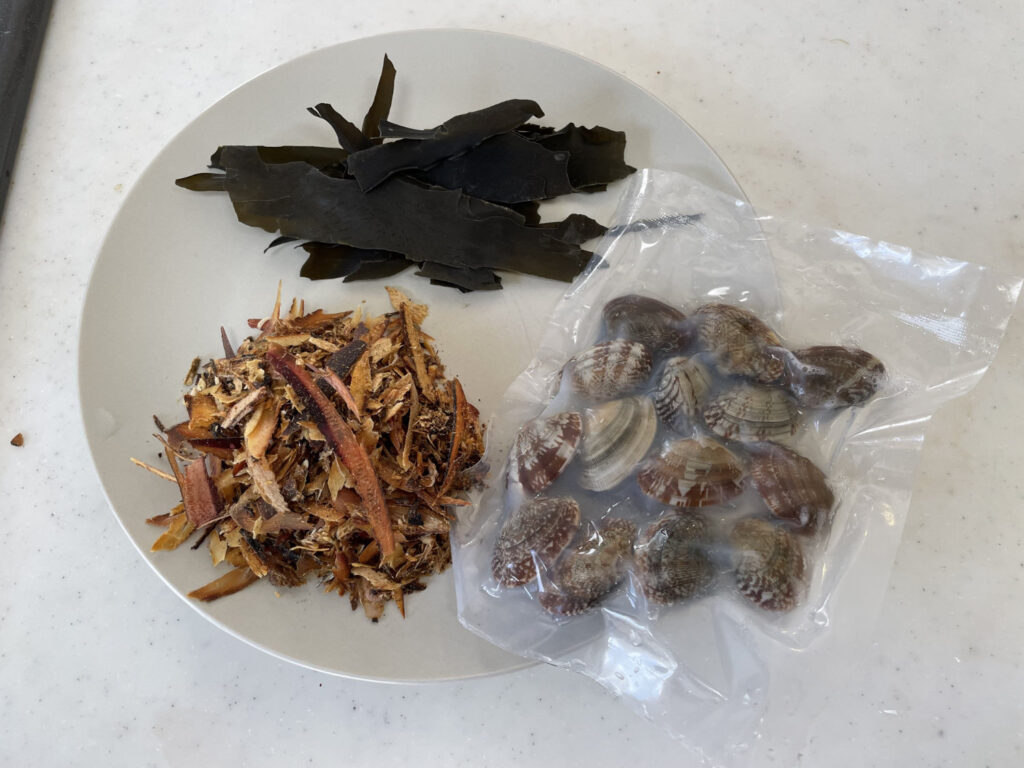

※1 I usually use frozen little neck clams because they are cheaper than raw little neck clams. Of course, raw clams are also good for this recipe.
※2 Mixed flakes (thick) include dried mackerel, dried Urume (round herring) and dried bonito.
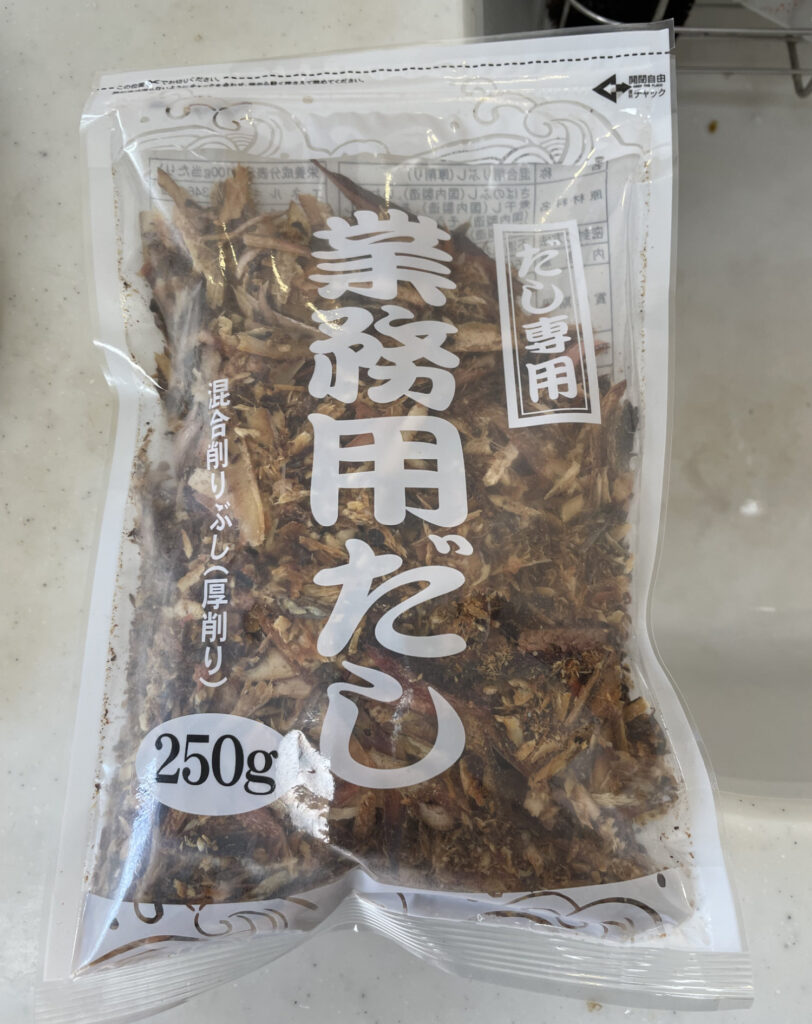

Seasoning
・white wine 80cc
・Mirin 60cc
・light soy sauce (salinity:17.5%) 10cc
・Ajinomoto (MSG) 5g
Salt
・salt 42g
What’s my recommendation about salt ?
Any usual salt will be fine, while rock salt is not suitable to this recipe because it includes other minerals and we cannot calculate its salinity precisely.
Steps
①Put Clams, Flakes, Sea Cabbage and 400cc Water into Pan, and Leave for 30 Minutes
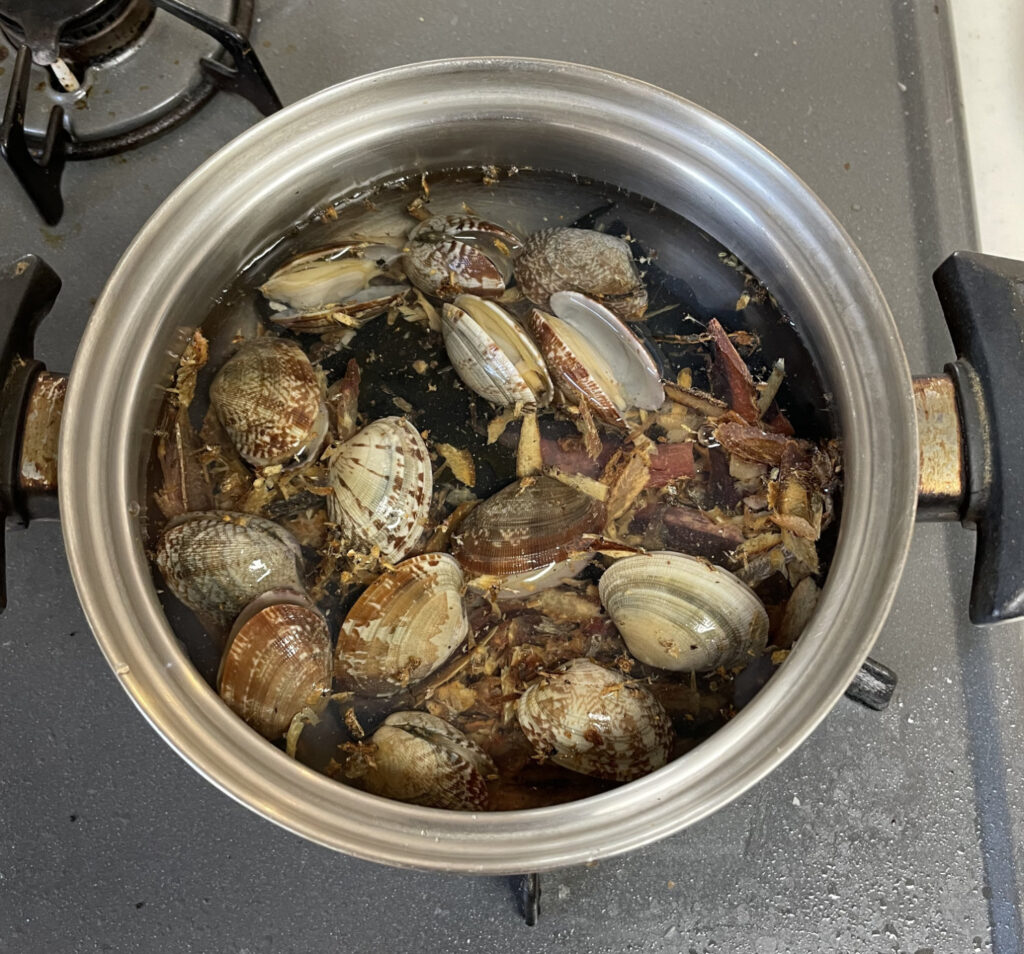

It should be left until mixed flakes and sea cabbage become soft.
②Start heating
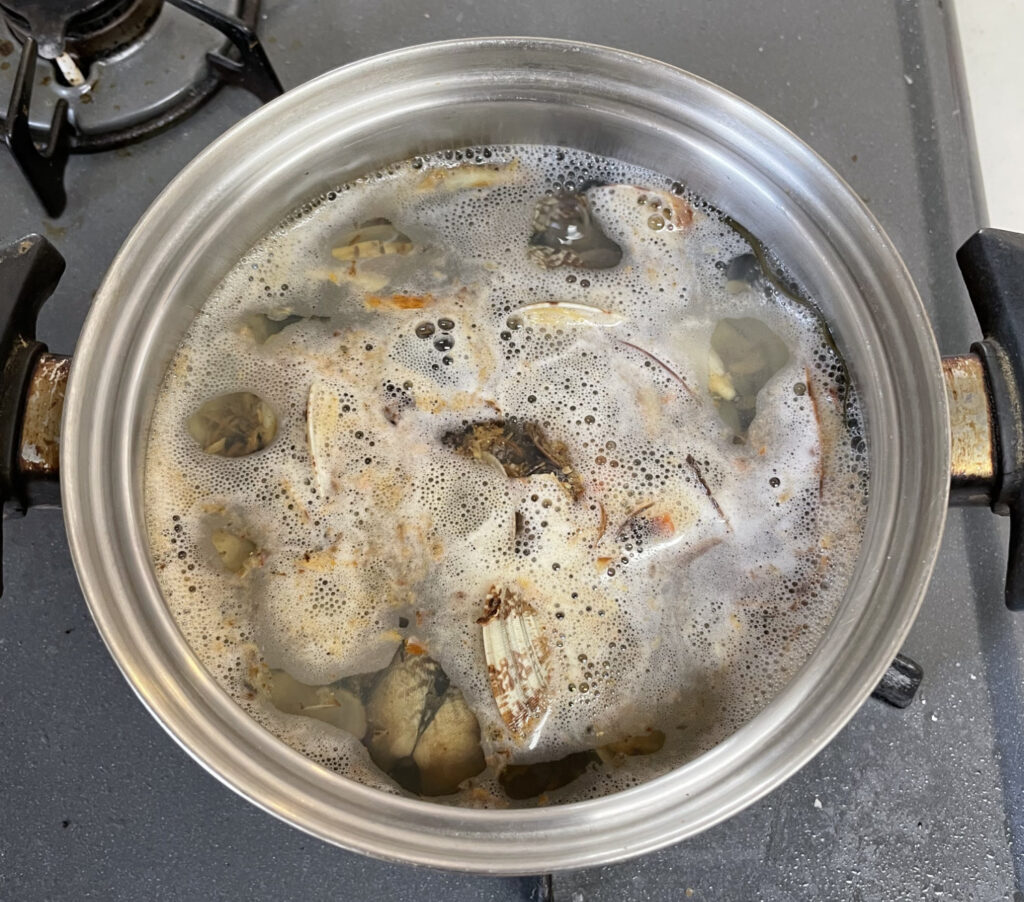

Simmer over low heat for 40 minutes. Skim the foam from the top of the broth diligently.
③Filter Broth with Strainer
200cc broth has been prepared.
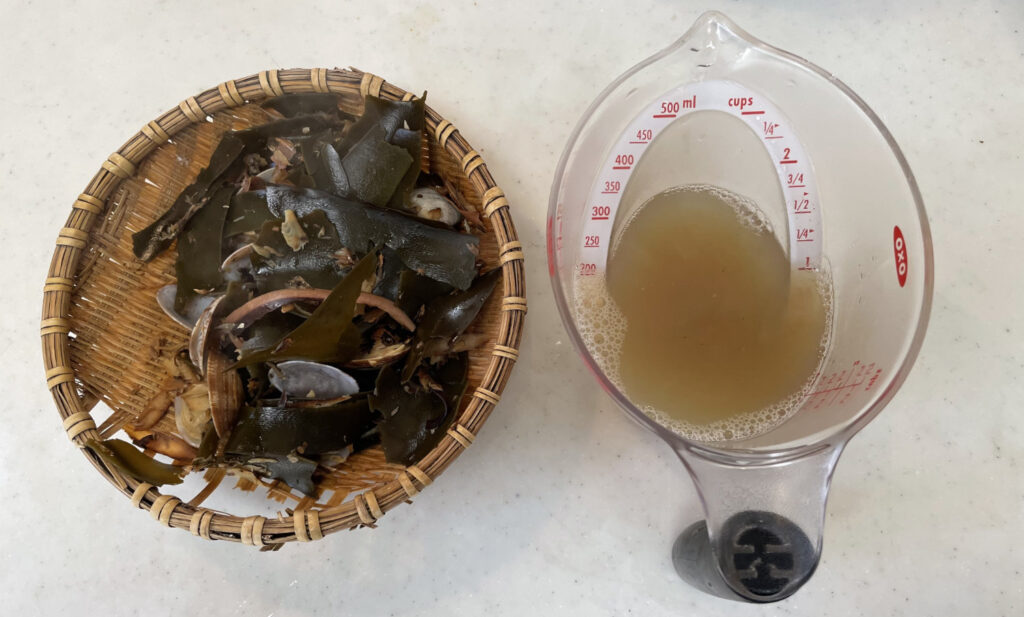

④Add Seasoning (Except for Salt) and Heat Again
Put the 200cc broth into a clean pan, and add white wine, Mirin and light soy sauce.
Simmer it for 15 minutes to cook off alcohol.
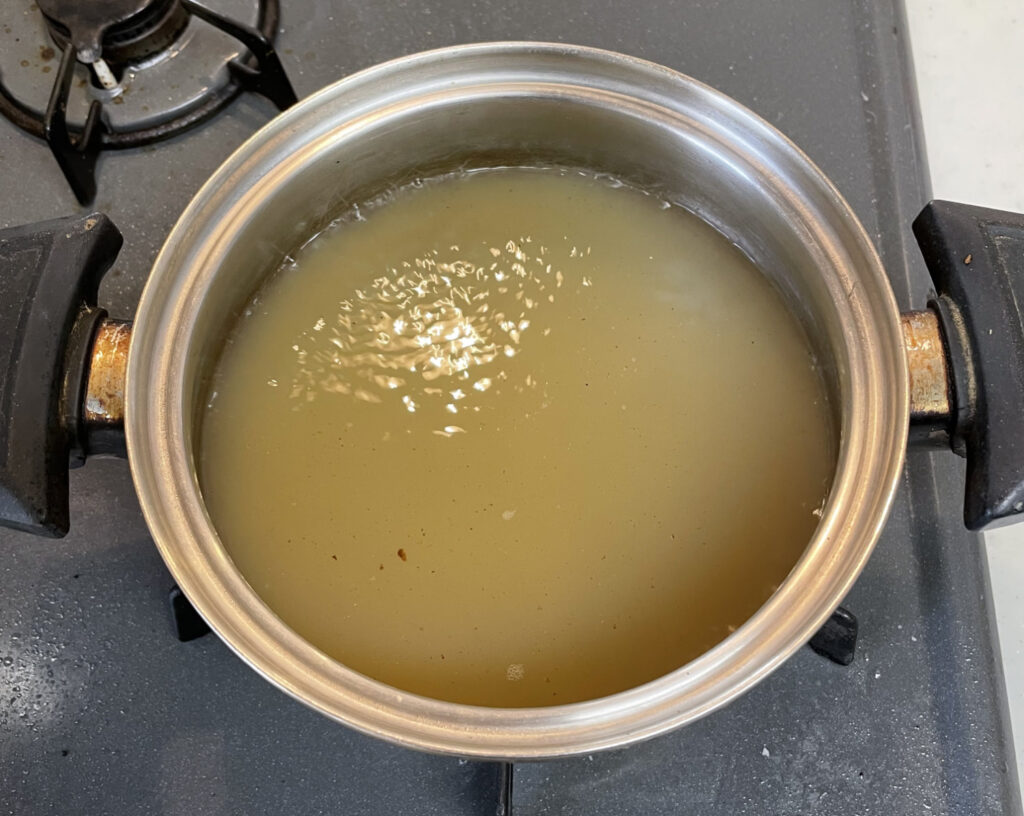

⑤Measure Volume again
Measure the volume again. Boil down it until it’s reduced to 220cc~270cc.
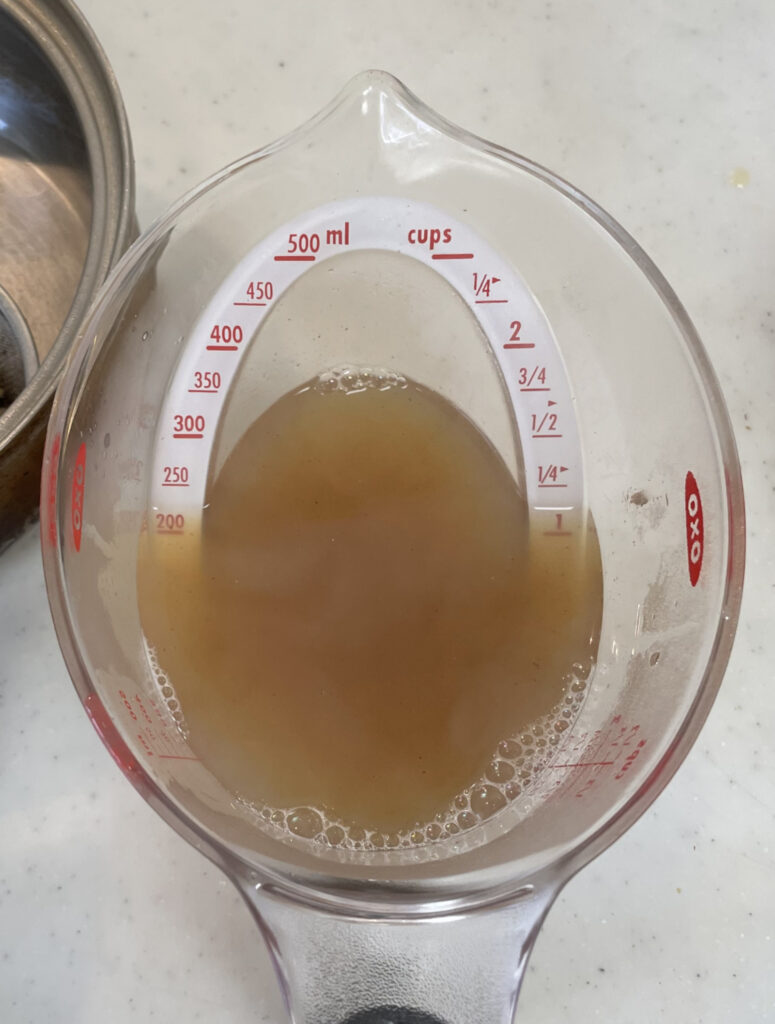

⑥Add Salt and Ajinomoto (MSG)
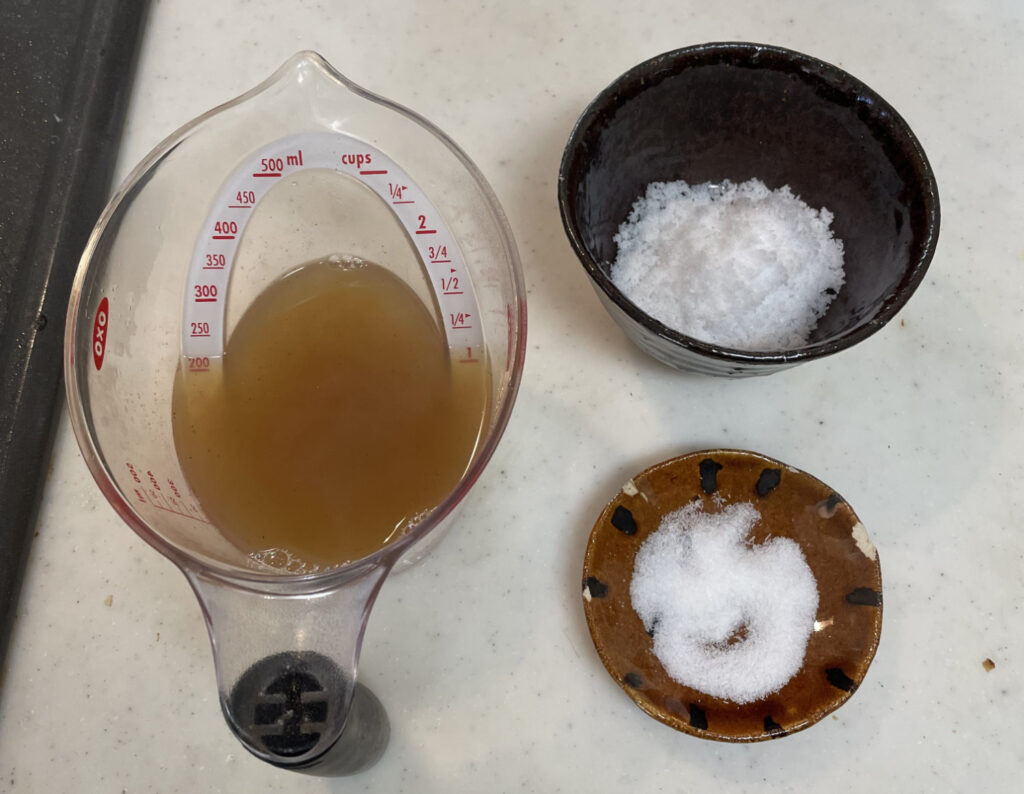

Finally, add 42g salt. You already put 10cc light soy sauce, which includes 1.75g salt. It means that 43.75g salt is used in your Tare in total. Put 5g Ajinomoto as well to give it a subtle flavor, if you want.
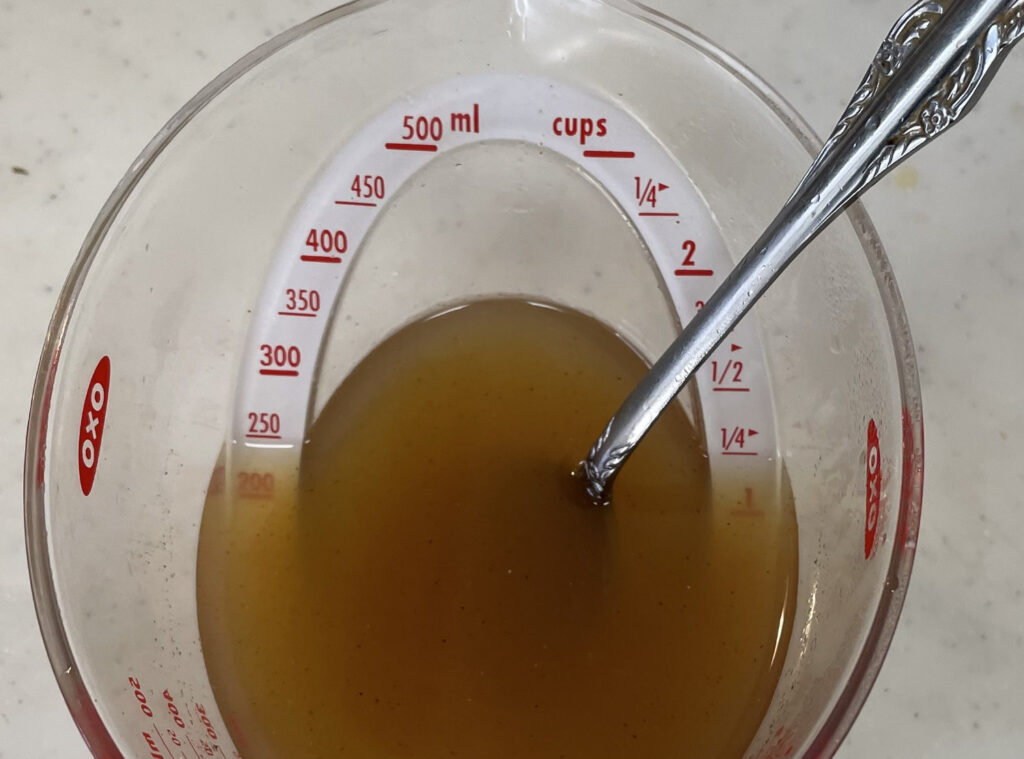

⑦Adjust Volume to 300cc by Adding Water
Add water little by little to make the volume 300cc exactly!
As a result, the quantity of salt should be about 14.5g per 100cc Shio Tare.
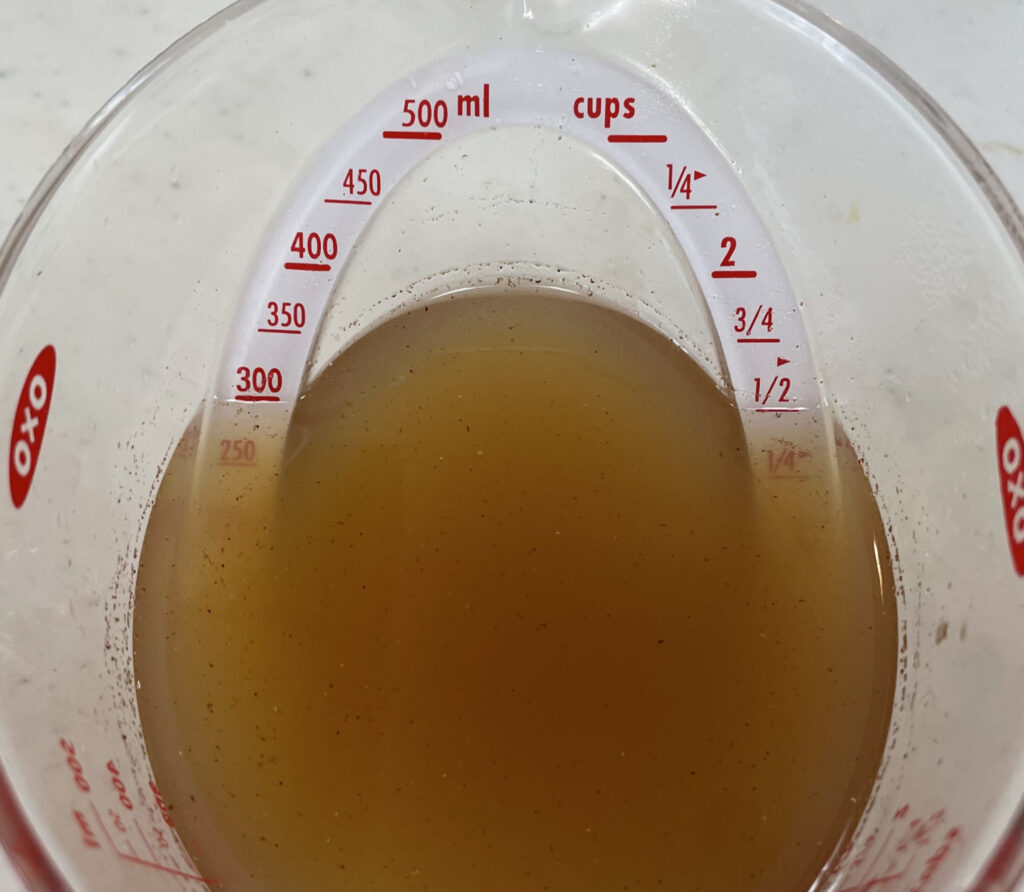

⑧Completed!
Exactly 300cc Shio Tare has been made.
You can make 9〜10 bowls of Ramen from it. It has a long strage life because of its salt density. You can keep it for 3 months at least in the fridge.
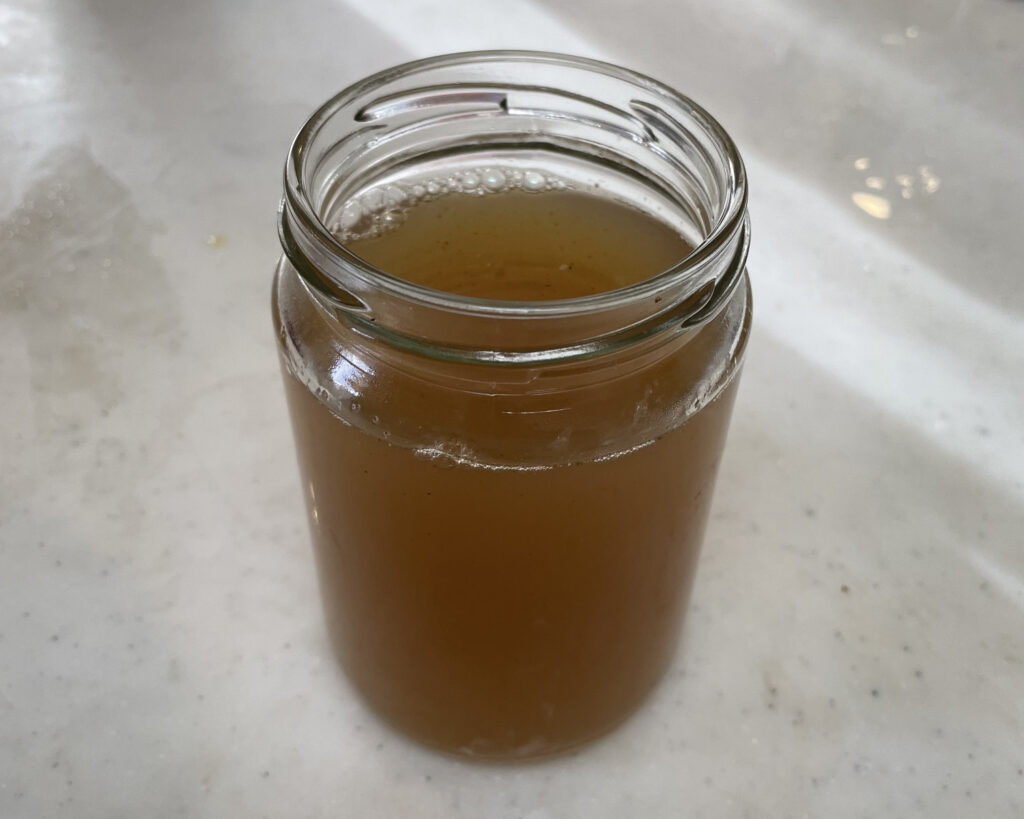

Comment
Flavor of Shio Tare
It is really important to supplement “umami” of Shio Tare with the followings;
・succinic acid from little neck clams
・inosinic acid from mixed flakes
・glutamic acid from sea cabbag
In addition to them, sweetness from white wine and Mirin as well as subtle flavor from light soy sauce, which enable Tare to keep its light color, help creat the fine harmony.
It goes without saying that Ajinomoto (MSG) is also effective to add “umami”.
Salinity of Shio Tare
Controlling salinity is the key to making good Ramen soup. If it’s low, you may feel something is missing. On the other hand, if it’s high, you may not be able to finish the bowl.
Although it is said that salinity:1.3% is ideal for Ramen in general, many restaurants serve 1.4% salinity Ramen. It indicates that people prefer a little salty Ramen.
You can make about 1.3% salinity Ramen by adding 300cc soup to 30cc Shio Tare on this article.
| quantity of soup | quantity of Shio Tare | salinity of Ramen |
|---|---|---|
| 300cc | 25cc | about 1.1% |
| 300cc | 30cc | about 1.3% |
| 300cc | 35cc | about 1.5% |
| 300cc | 40cc | about 1.7% |
Please decide the quantity of Shio Tare according to your preference or what you want!
It would be better to add more salt to greasy soup!?
Apart form the golden ratio written above, how greasy the soup is also affects one’s perception of salt.
Grease coats saltiness and makes us not to feel it directly. Therefore, more salt is likely to be added to fatty Ramen.
However, I personally think that salinity of Shio Ramen shouldn’t be that high because of its direct salty taste compared with Shoyu (soy sauce) Ramen.
Finally
Le’ts dilute our Shio Tare to 10 times its volume, and taste it. It’s good. I think it’s very standard Shio Tare suitable for any Ramen. And also, it’s not very difficult to gather the ingredients for this recipe.
It’s good enogh for homemade Ramen!
That’s all for how to make basic Shio Tare for Shio Ramen.
Let’s make Shio Ramen using this Shio Tare!
